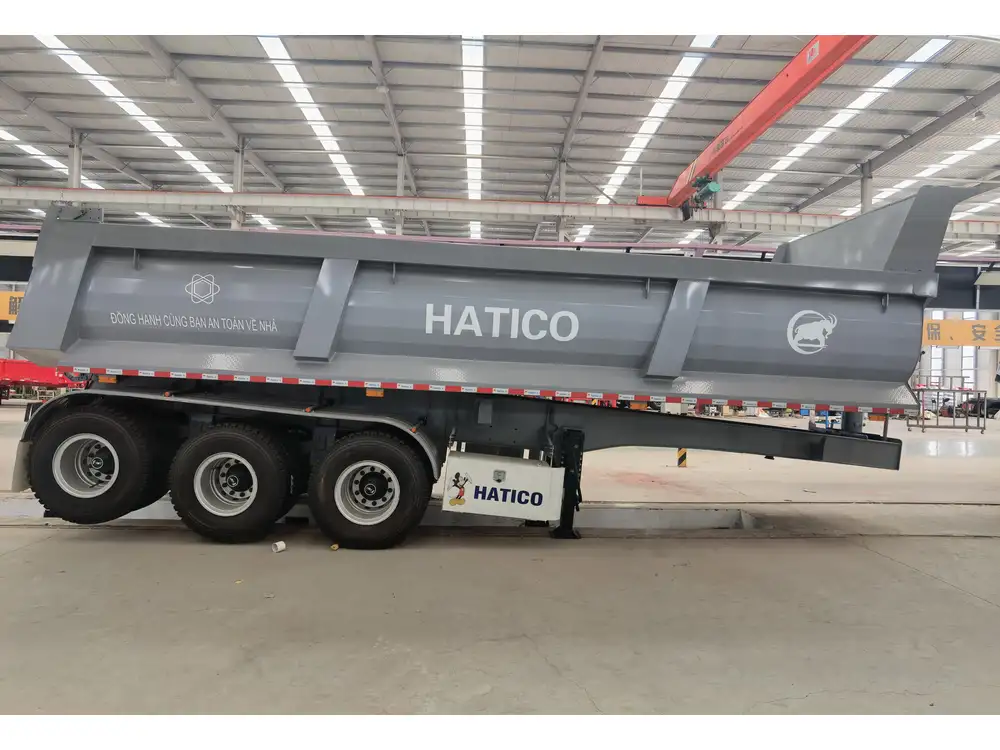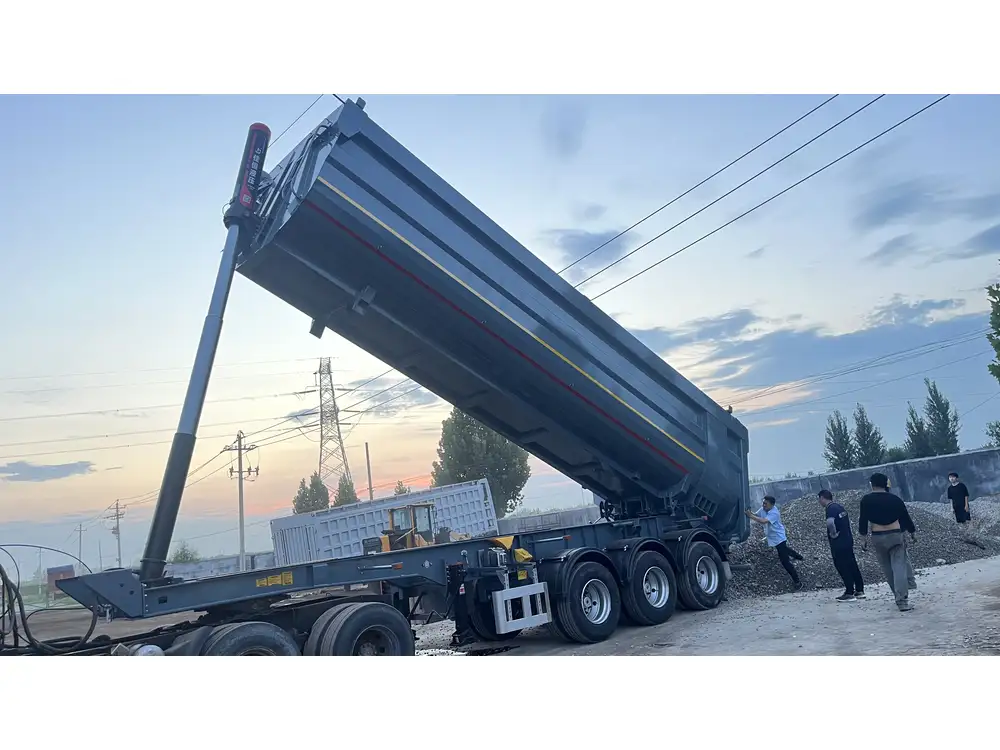When it comes to transportation and construction, selecting the right equipment is crucial. Among the many options, the dual axle dump trailer stands out as an efficient solution for carrying heavy loads, particularly in construction sites, landscaping, and waste management. But how much does a dual axle dump trailer actually weigh? This question is essential for proper load calculations, vehicle compatibility, and adhering to various legal regulations. Let’s delve into the factors influencing the weight of these trailers, the variety available, and the implications of weight in practical usage.
What is a Dual Axle Dump Trailer?
A dual axle dump trailer is a type of trailer equipped with two axles, designed primarily for hauling and dumping materials. The combination of dual axles provides enhanced stability and weight distribution, making these trailers a reliable choice for transporting heavier payloads compared to single axle trailers.
Key Features
- Axles: Two axles provide balanced weight distribution, enhancing towing safety.
- Hydraulic System: Most models include a hydraulic lift system enabling efficient unloading of contents.
- Construction: Often made with robust materials like steel or aluminum to support heavy loads.
- Length and Capacity Options: Available in different sizes, typically ranging from 5 to 16 feet, to serve a variety of needs.

Average Weight of Dual Axle Dump Trailers
The weight of a dual axle dump trailer can vary widely depending on the design and materials. Here’s a breakdown of typical weights for standard models:
| Trailer Length | Estimated Weight | Load Capacity |
|---|---|---|
| 5 feet | 1,800 – 2,500 lbs | Up to 5,000 lbs |
| 10 feet | 2,500 – 3,500 lbs | Up to 10,000 lbs |
| 12 feet | 3,500 – 4,500 lbs | Up to 12,000 lbs |
| 14 feet | 4,500 – 5,500 lbs | Up to 14,000 lbs |
| 16 feet | 5,500 – 7,000 lbs | Up to 15,000 lbs |
Factors Affecting Weight
Material Composition:
- Steel: Heavier but provides greater durability.
- Aluminum: Lightweight, better fuel efficiency but may have a lower load capacity.
Design Variations:
- Size: Longer trailers weigh more due to increased material and structural support.
- Dump Mechanism: Trailers with more complex hydraulic systems may weigh more.
Added Features:
- Braking Systems: Electric or hydraulic brakes add weight but provide greater safety.
- Sidewalls and Tailgates: The height and material of sidewalls can increase overall trailer weight.
Advantages of Dual Axle Configuration
The dual axle setup offers several advantages that affect not just weight but also performance and safety:
- Improved Stability: The additional axle reduces the chance of swaying while towing heavy loads.
- Better Weight Distribution: Enhanced load capacity without overstressing any single portion of the trailer or towing vehicle.
- Safety and Control: With a dual axle, stopping distance is generally improved, making it easier to maneuver.

Legal Considerations on Weights
Understanding the legal limitations concerning trailer weights is paramount for safe operations. Trailer weight affects the legality of a load, particularly on public roads, and can determine compliance with local, state, and federal regulations.
Gross Vehicle Weight Rating (GVWR)
Every trailer comes with a Gross Vehicle Weight Rating (GVWR), which indicates the maximum weight the trailer can handle. This number includes the trailer’s weight plus its cargo. Exceeding this rating can lead to legal troubles, safety hazards, and potential damage to both the trailer and the towing vehicle.
Legal Weight Limits
In the United States, the legal weight limits for trailers vary by state. Generally, the maximum combination weight for a vehicle and trailer is 80,000 lbs on interstate highways. Compliance with these limitations is critical for safety and can protect operators from hefty fines.

Choosing the Right Dual Axle Dump Trailer
When selecting a dual axle dump trailer, several considerations should be addressed beyond just its weight:
Assess Your Needs
- Intended Use: Identify the primary purpose of the trailer, such as construction, landscaping, or waste management.
- Load Requirements: Calculate the types and amounts of materials you plan to transport to determine optimal capacity.
- Towing Vehicle Compatibility: Ensure your vehicle can handle the combined weight of the trailer and its maximum load.
Quality and Durability
Opt for a trailer that emphasizes durability and quality materials. Investing in a trailer from reputable manufacturers ensures longevity and reliability.

Upgrades and Customizations
Consider whether you need additional features—such as reinforced frames, increased unloading efficiency through improved hydraulic systems, or tandem axles for even more stability. Customizing your trailer can enhance efficiency and safety tailored to specific operations.
Maintenance and Care
Maintaining your dual axle dump trailer not only prolongs its life but ensures safe operation. Here are essential maintenance tips:
Regular Inspections
Conducting regular checks on important components can prevent mechanical failures:
- Tires: Check for proper inflation and signs of wear.
- Brakes: Ensure all braking systems function effectively.
- Hydraulic System: Inspect for leaks and test lift functions occasionally.

Cleaning and Maintenance
Keep the trailer clean to prevent rust and deterioration. Regular washing, especially after hauling corrosive materials, can extend the lifespan and appearance of the trailer.
Storage Considerations
When not in use, store your trailer in a dry, protected area to shield it from environmental damage. Use covers for added protection against harsh weather elements.
Conclusion
In summary, understanding the weight of dual axle dump trailers is fundamental for making informed decisions about trailers that suit your needs. Weighing factors such as materials, design, legal considerations, and maintenance routines can enable you to choose an optimal solution for your transport requirements, ensuring safe and efficient use.
Whether you’re a contractor, landscaper, or waste handler, recognizing the advantages and limitations of dual axle dump trailers not only optimizes operations but can also significantly impact your bottom line. Weigh your options carefully, consider your specific needs, and invest wisely in a dual axle dump trailer that suits your operational demands.
By utilizing this in-depth guide, we aim to help you navigate the complexities of weight and trailer selection successfully. Always prioritize safety, compatibility, and durability to make the most out of your investment in heavy hauling equipment.



